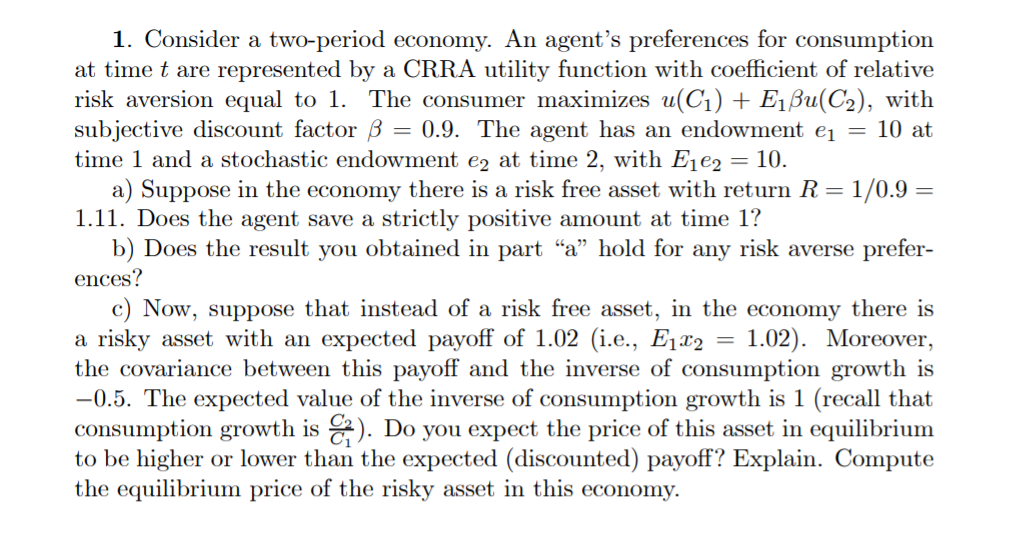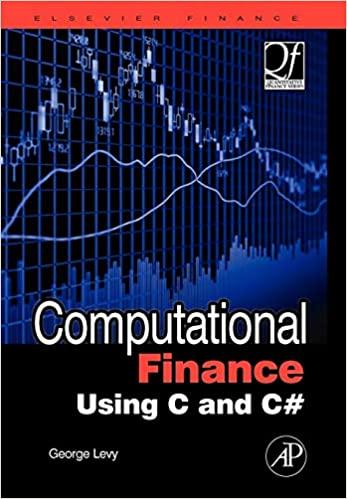
1. Consider a two-period economy. An agent's preferences for consumption at time t are represented by a CRRA utility function with coefficient of relative risk aversion equal to 1. The consumer maximizes u(C1) + EjBu(C2), with subjective discount factor B = 0.9. The agent has an endowment ei = 10 at time 1 and a stochastic endowment e2 at time 2, with Eje2 10. a) Suppose in the economy there is a risk free asset with return R= - 1/0.9 = 1.11. Does the agent save a strictly positive amount at time 1? b) Does the result you obtained in part a hold for any risk averse prefer- ences? c) Now, suppose that instead of a risk free asset, in the economy there is a risky asset with an expected payoff of 1.02 (i.e., E122 = 1.02). Moreover, the covariance between this payoff and the inverse of consumption growth is -0.5. The expected value of the inverse of consumption growth is 1 (recall that consumption growth is 6). Do you expect the price of this asset in equilibrium to be higher or lower than the expected (discounted) payoff? Explain. Compute the equilibrium price of the risky asset in this economy. 1. Consider a two-period economy. An agent's preferences for consumption at time t are represented by a CRRA utility function with coefficient of relative risk aversion equal to 1. The consumer maximizes u(C1) + EjBu(C2), with subjective discount factor B = 0.9. The agent has an endowment ei = 10 at time 1 and a stochastic endowment e2 at time 2, with Eje2 10. a) Suppose in the economy there is a risk free asset with return R= - 1/0.9 = 1.11. Does the agent save a strictly positive amount at time 1? b) Does the result you obtained in part a hold for any risk averse prefer- ences? c) Now, suppose that instead of a risk free asset, in the economy there is a risky asset with an expected payoff of 1.02 (i.e., E122 = 1.02). Moreover, the covariance between this payoff and the inverse of consumption growth is -0.5. The expected value of the inverse of consumption growth is 1 (recall that consumption growth is 6). Do you expect the price of this asset in equilibrium to be higher or lower than the expected (discounted) payoff? Explain. Compute the equilibrium price of the risky asset in this economy







